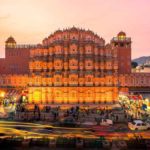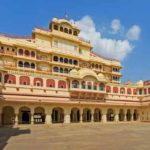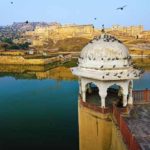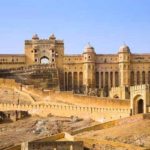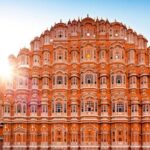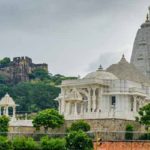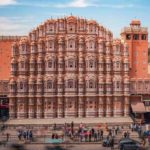Places To Visit Near Jaipur, one of India’s most well-known cities, is the jewel in the crown of Indian tourism. The city is also known as Pink City and is regarded as the cultural capital of the country. Jaipur, the world’s first planned city, was founded on the Vastu Shastra principle (Indian archaeological science).
Maharaja Sawai Jai Singh II founded Jaipur on November 18, 1727 AD, and it was named after him. The capital city of Rajasthan draws foreign tourists, making it a major tourist destination in India and Rajasthan.
The city is small, with lively markets tucked away in narrow, bustling alleyways. These shops, which are renowned for their handicrafts and ethnic products, are the best places to learn about the city’s culture. Apart from shopping, Jaipur is renowned for hosting lively festivals and thrilling fairs. Teej festival, Jaipur Kite Festival, and Camel Festival are just a few of Jaipur’s cultural events. While the Jaipur Literature Festival is a one-of-a-kind event that is regarded as the world’s largest lit fest, bringing together writers, authors, philosophers, and philanthropists from all over the world to discuss a variety of topics.
Jaipur is known for its forts, palaces, historical and heritage sites, as well as its shops, fairs, and festivals. Amber Fort is a beautiful fort that serves as a major tourist attraction in the city. Hawa Mahal is also a lovely palace, with 953 jharokas from which tourists can enjoy a magnificent view of the city. The City Palace, Jantar Mantar, and Albert Hall are all important Places To Visit Near Jaipur.
The city of Jaipur is divided into two sections: Old Jaipur and New Jaipur. Old Jaipur is generally contained within the vast boundaries formed by Maharaja Jai Singh II, while the city beyond the boundary offers a glimpse of modern life. Wide roads, massive modern structures, lush gardens, Cineplex and Hyper Malls, as well as discos and nightclubs, can all be found here.
When Prince Albert and Queen Elizabeth II visited India in 1876, the entire city was painted in the welcoming hues of pink, gaining it the nickname “Pink City” around the world. Along with the cities of Delhi and Agra, which are just as important in terms of tourism as Jaipur, Jaipur forms the magnificent Golden Triangle India. International visitors flock to the Golden Triangle Circuit to take in the city’s rich culture, heritage, and traditions.
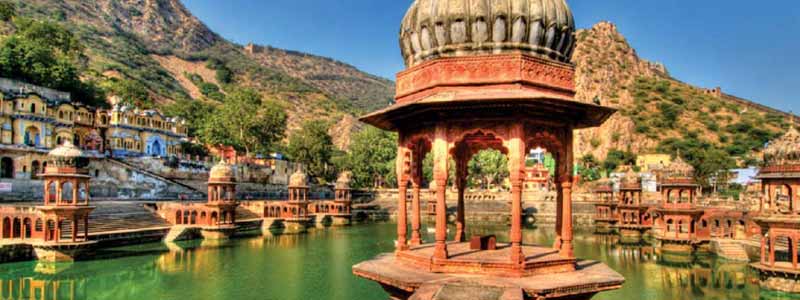
Alwar – (138 Kms From Jaipur)
The Fairy Queen’s journey comes to an end in Alwar! Fairy Queen, the world’s oldest operating engine and a national treasure of India, leads a train from Delhi encampment to Alwar in Rajasthan. The engine was designed in 1855 and purchased from a British firm by the Eastern Indian Railways. The train that pulls this engine now acts as a tourist attraction.
Alwar’s history and origins can be traced all the way back to 1500 BC. It is home to magnificent palaces and forts from a bygone age, nestled in the green hills of the Aravalli range. The hills’ deep valleys and dense forest cover provide a refuge for a range of birds and animals, including the grey partridge and white-throated kingfisher, the Bengal tiger and golden jackal. Alwar is a traveller’s delight because of its splendour and beautiful architecture, as well as the calm lakes, royal hunting chalets, thick jungles, and a socio-cultural setting unlike any other Places To Visit Near Jaipur.
Alwar is one of Rajasthan’s oldest towns. The city is also the most recent of the Rajput kingdoms, which is ironic. Its origins date back to the Viratnagar kingdoms, which flourished around 1500 BC. This is where the Pandavas, the Mahabharata’s mighty heroes, spent the final years of their 13-year exile, also known as Matasya Desh.
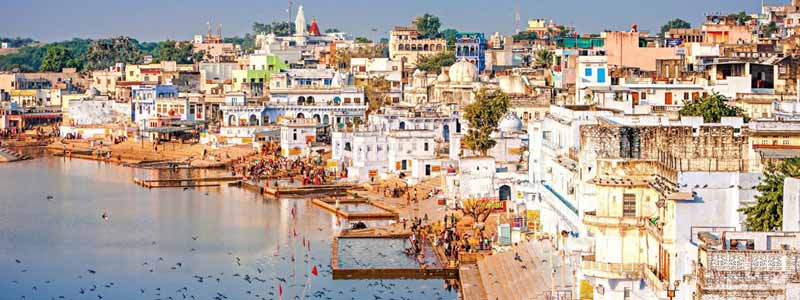
Pushkar – (161 Kms From Jaipur)
Pushkar is one of India’s oldest cities. Pushkar, in the heart of Rajasthan, is a well-known pilgrimage destination that draws tourists and devotees from all over the world. Pushkar is a magic bag that gives new thrills and surprises to anyone who visits. The natural magnificence of the place, the religious appeal, the shopper stops, and the adventure spots, Pushkar is a magic bag that gives new thrills and surprises to anyone who visits. Pushkar’s cattle fair is another enticement that attracts tourists to join in the fun and frolic.
Lord Brahma, according to Hindu mythology, built this holy city, which is why the famous Brahma Temple is one of Pushkar’s most prominent tourist attractions. With its gentle cool view, the Pushkar Lake is a fascinating place that calms the mind and soothes the soul. Furthermore, people equate the lake’s creation with a miracle performed by God Brahma, giving the lake a religious connotation. Another aspect that makes Pushkar a popular tourist destination is its accessibility by air, rail, and road.
What makes Pushkar a famous tourist destination is that the journey to get there is as fascinating as the city itself. The natural beauty of the deserts and the rising sand dunes is stunning, and visitors flock to see it. The sun makes the sand shimmer in the afternoons, as if the ground were encrusted with endless diamonds, and the view is breathtaking Places To Visit Near Jaipur.
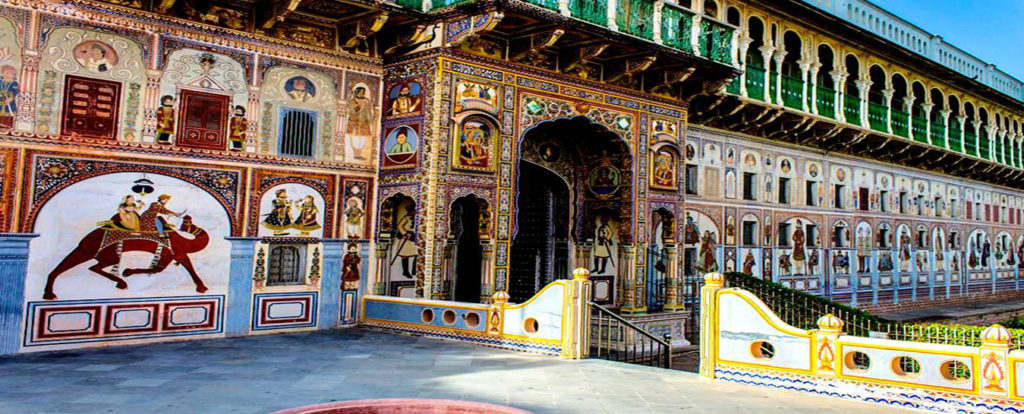
Mandawa – (168 Kms From Jaipur)
Mandawa’s tourism revolves around its historical legacy, ancient forts and palaces, frescoed mansions, and rustic lifestyle. Mandawa in Rajasthan is a must-see destination in India because of its brave Rajputs. The Rajputs, Gujars, Ahirs, Bhils, Jats, and Meenas all contributed significantly to the development of the eye-catching palaces and forts that dot the Rajasthan landscape today. Mandawa is a well-known city in Rajasthan that dates back to the 18th century. Mandawa’s havelis and forts make it a popular tourist destination in Rajasthan. The object of the vast mansions of powerful and wealthy merchant families, which are embellished with beautiful wall paintings, was to live.
However, as time passed, the bulk of the merchants relocated, leaving these lovely Havelis in the darkness of anonymity. The magnificence of these havelis has largely been preserved, drawing a large number of visitors from all over the world. The havelis’ wonderful beauty provides a fantastic ceremonial feast for an artwork lover, as decorated and frescoed walls deliver a fantastic ceremonial feast depict stories from Hindu epics, hunting scenes, and current affairs during the British colonial era. Mandawa is known all over the world as a “Open Art Gallery” because of its large number of beautiful hvelis.
The paintings, which highlight the talents of local artists and artisans, depict Mandawa’s rich heritage of art, architecture, and culture. The truth is that Rajasthan has a multitude of havelis, many of which are decorated with enthralling wall paintings. Some of them, however, have been ranked among the highest. The painting of Indra Dev on an elephant and Lord Shiva on his vehicle, the Nandi bull, is a highlight of the Hanuman Prasad Goenka Haveli. The Jhunjhunwala Haveli has a stunning gold leaf painted room. Frescoes of elephants and horses adorn the two gates of the Goenka Double Haveli, Places To Visit Near Jaipur.
Saraf Mohan Lal Mohan Lal Saraf Mohan Lal Saraf Mo Maharaja stroking his moustaches is depicted fresco in Haveli. Murmuria Haveli‘s paintings show a train going through a crowded level crossing with a crow flying above it. It features an epic painting of India’s first prime minister, Jawaharlal Nehru, riding a horse while carrying a national flag. BinsidharNewatia Haveli, GulabRaiLadia Haveli, Chokhani Double Haveli, and LakshminarayanLadia Haveli are among the many beautiful havelis in Manadawa.
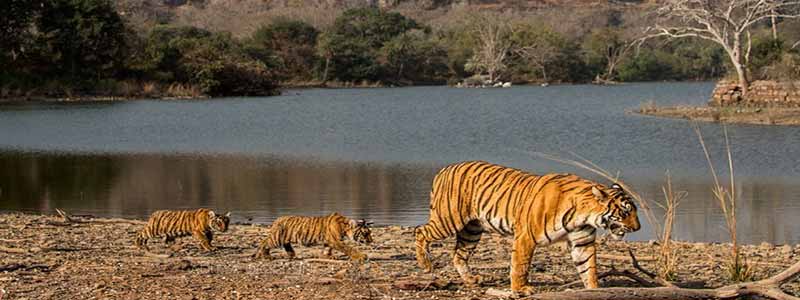
Ranthambore National Park – (122Kms From Jaipur)
The Ranthambore National Park is situated in the state of Rajasthan. Ranthambore National Park, once the Maharaja of Jaipur’s royal hunting reserve, is now one of Northern India’s finest and most popular national parks. The park is surrounded by steep rocky hills, and the imposing architecture of Ranthambore Fort (built in the 10th century) adds to the scenery. This historic fort is the inspiration for the national park.
In 1973, Ranthambore was listed as one of the Project reserves. In 1980, it was designated as a national park. Ranthambore National Park, along with nearby sanctuaries such as Sawai Man Singh Sanctuary and Keladevi Sanctuary, covers an area of 1,334 square kilometres. Ranthambore is renowned for its tigers, and it is one of the best places in the world to see these magnificent jungle predators.
The park is bordered to the north by the Banas River and to the south by the Chambal River, with grasslands on the plateaus, meadows in the valleys, and lush vegetation around the canals. PadamTalab, Malik Talab, and Raj Bagh are three large lakes that are similar turquoises studded in a vast forest abounding with aquatic plants such as duckweeds, lilies, and lotus. PadamTalab is the largest of the park’s lakes, and the stunning red sandstone JogiMahal sits on the lake’s shore Places To Visit Near Jaipur.
Ranthambore helps you to communicate with some of nature’s most gifted creatures. It’s one of those national parks where you’ll never leave without anything. Its history, culture, safaris, lush green forests, and wildlife make it a one-of-a-kind destination.
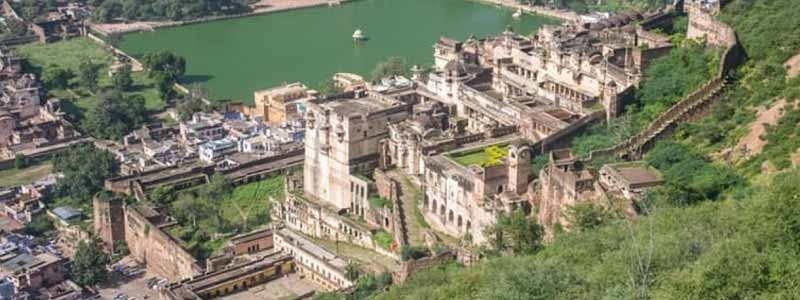
Bundi – (218Kms From Jaipur)
Bundi Bun The ancient city of Bundi, which is engraved in history as the capital of the Chauhan kingdom in the 12th century, gets its name from the Meena tribe’s chief, Bunda Meena. In mediaeval times, it was an important Rajput stronghold.
The city’s waterworks in the step wells, adventure tourism, and cultural heritage are all well-known. As with many other tourist destinations in Rajasthan, forts and palaces are among the Places To Visit Near Jaipur.
The fort of Taragarh is a majestic building that is characterised by its imposing gateway. The fort provides a panoramic view of the city and houses some water reservoirs cut out of the fort’s rocky foundation. The largest of the battlements is Bhim Burj, a massive tower that acts as a canon’s base. The Rani Mahal, a portion of the palace, was built for rulers’ queens and concubines; it is now in ruins.
The Sukh Mahal might be the next stop on your itinerary. It is a majestic palace that stands on the banks of the Sukh Sagar Lake and was once used as a royal summer residence. The Mahal is thought to be connected to the old Bundi palace through an underground tunnel. The look is completed by an elegant garden on the grounds. The structure’s centrepiece is a white marble chattri.
Bundi is known for its waterworks, also known as Bawadis, which are step-wells. The step-wells were thought to be a solution to the city’s water problems. There are up to 50 step-wells in all, each with its own design and measurements. The Rani-ji-ki bawadi is a sight to behold. The Bundi Palace, which houses murals and other works of art, is another tourist attraction in the city.
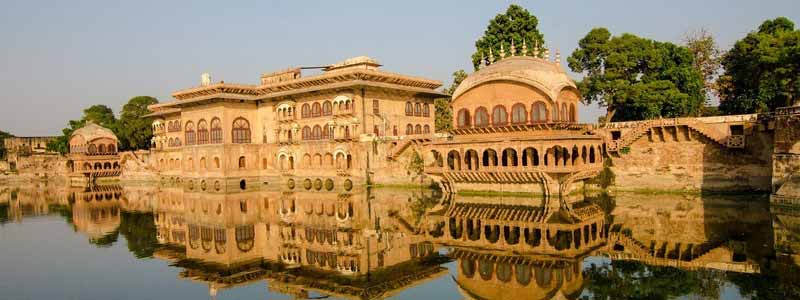
Bharatpur – (184 Kms From Jaipur)
Bharatpur is home to the Bharatpur Bird Sanctuary, a UNESCO World Heritage Site that is now known as the Keoladeo Ghana National Park. This city in Rajasthan, which was once a royal province of Rajputana, has gained a reputation as one of the best bird-watching destinations in the world. Without a question, the remarkable diversity of avian and wildlife species It is for this reason that Bharatpur tours are so popular. It is also regarded as the “eastern gateway to Rajasthan” because of its proximity to both Delhi and Agra. It is also a popular weekend getaway and a must-see attraction on a Golden Triangle tourist circuit tour.
The world heritage bird sanctuary, Keoladeo Ghana National Park, is Bharatpur’s most popular tourist attraction. In the natural world, there are nearly 364 bird species, 379 floral species, 50 fish species, 13 snake species, 5 lizard species, 7 amphibian species, 7 turtle species, and a number of other invertebrates and other animal kingdom residents. The park, where tourists can go on a safari, is the main attraction of Bharatpur tourism. There are also a variety of other historical places to visit. Take time on your Bharatpur tour to visit the Bharatpur Palace, Lohagarh Fort, Government Museum, Deeg, Ganga Mandir, and other attractions.
Bharatpur is awe-inspiring to birdwatchers and nature lovers. Among the throngs of birds, breeding Painted Storks and White Ibises stand out, Darters and Spoonbills, Black-necked Storks, Comb Ducks, and the enigmatic Spotted Creeper are among the birds that can be seen. Hundreds of Ferruginous and Lesser Whistling Ducks, as well as smaller numbers of Red-crested Pochards and Spotbilled Ducks, swarm the marshes and pools. Both White and Dalmatian Pelicans, as well as large numbers of Common Cranes and a substantial population of the elusive Sarus Cranes, are popular winter visitors to the national park.
The bird sanctuary gained popularity as the winter home of the exceptionally endangered Siberian Cranes, who came to visit from Siberia’s bitterly cold climate. In recent years, there has been a substantial decline in the number of sightings of these species. A large variety of raptors, including Spotted, Imperial, Steppe, and Tawny Eagles, as well as a slew of vultures, are also available in the park. Orange-headed Ground Thrush, Dusky Warbler, Marshall’s Iora, and Large-tailed Nightjar are among the uncommon bird birds. The Blackbuck, Indian Smooth Otter, Fishing Cat, Soft-shelled Turtle, Indian Python, Nilgai, Sambar, Spotted Deer, and Rhesus Macaques are among the rare and beautiful wildlife.
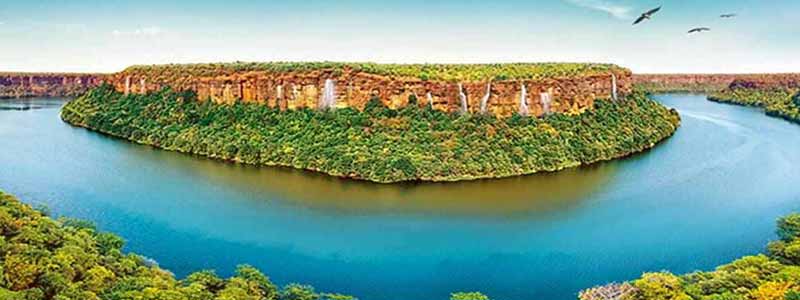
Kota – (251 Kms From Jaipur)
In the state of Rajasthan, Kota is located on the eastern bank of the Chambal River. The Malwa Plateau includes Kota, which is situated on a high sloping tableland. The Mokandarra hills stretch from the town’s southeast to northwest. Bundi was once a part of the Rajput kingdom of Bundi. In 1624, Mughal emperor Jehangir partitioned Bundi and created Kota as a separate state. In 1818, Kota entered the British Empire and later became part of the Indian state of Rajasthan. In addition to being Rajasthan’s manufacturing centre, Kota also serves as the state’s army headquarters. The summers in Kota are extremely hot.
Between June and August, the city receives very little rain. Winters in the city are fun and are the perfect time to stay. Rajasthan’s industrial capital, Kota, is now known as such. Cotton and oilseed milling, cloth weaving, distilling, dairying, metal handcrafts, pesticides, fertilisers, and engineering equipment are among the diverse industries. Kota is also known for its stone-polishing industry, which manufactures Kota stone in a variety of colours such as Kota brown, Kota blue, and others.
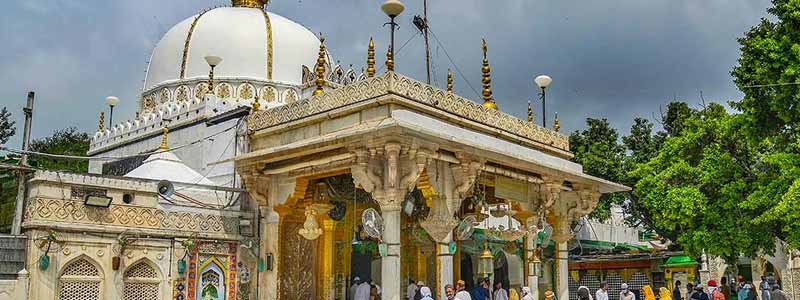
Ajmer – (153 Kms From Jaipur)
The city of Ajmer, nestled in Rajasthan, is a symphony of diverse faiths and cultures, encircled by the craggy Aravalli Hills that overlook the scenic expanse of the Ana Sagar Lake. Ajmer-e-Sharif, the Dargah (a shrine built over a grave) of Khwaja Muin-ud-din Chishti, the founder of the Chishti order, the main Sufi sect in India, is a popular pilgrimage stopover. While the Dargah attracts visitors all year, it is particularly beautiful during Ramadan and on the saint’s death anniversary, when throngs of people flock to pay their respects.
Ajmer is dotted with grand forts, ancient temples, and a vibrant history that can be seen in its arts and crafts, as it was once the seat of the Chauhan kings who founded the city. The city also serves as a gateway to Pushkar, which is a major Hindu pilgrimage destination. Pushkar is known for its popular fair, which attracts over 2,00,000 visitors during the months of October and November, and is surrounded by a spectacular landscape of sand dunes, lakes, hills, and forests.
Ajmer has a long and glorious history, dating back to Raja Ajaypal Chauhan’s founding and Prithviraj Chauhan’s assassination by Muhammad of Ghor in the 12th century. The Marwar dynasty conquered it in 1532, followed by the Mughal dynasty’s rule under Akbar in 1559. Emperor Akbar was the one who promoted Ajmer to the rank of a full-fledged province. The Mughals ruled Ajmer until 1770, when it was handed over to the Marathas. Finally, in 1818, the Marathas gave Ajmer to the East India Company.
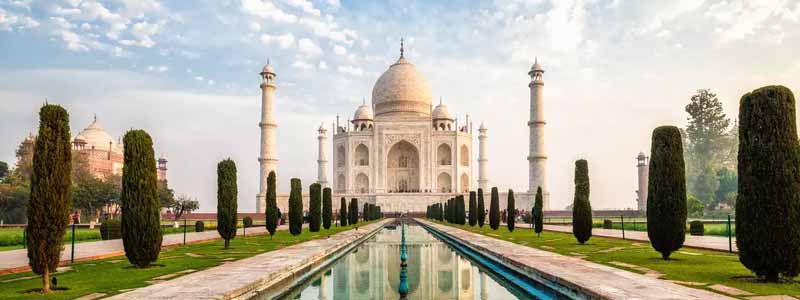
Agra – ( 237 Kms From Jaipur)
Agra, one of India’s oldest cities, is associated with the Mughal era and the magnificent Taj Mahal, one of the Seven Wonders of the World. Apart from the Taj Mahal, the city of Agra and its environs are testaments to the Mughal era’s majestic architecture. The Mughal emperors were responsible for many of Agra’s magnificent monuments. The city of Agra boasts of having witnessed the Mughal Empire’s golden age, when Agra served as the empire’s capital. The magnificent monuments of Agra exemplify the grandeur and pinnacle of Mughal architecture. Even the Mughal Empire’s other capital, Delhi, as well as many other kingdoms, lack such a wealth of mediaeval architecture, cultural, and traditional heritage.
Agra is one of India’s most famous tourist destinations and one of the three renowned tourism destinations known as the Golden Triangle of India. The ancient city of Agra, also known as the Taj Mahal, draws thousands of visitors each year, both Indian and foreigners. There is, however, much more to see and do in Agra than just the Taj Mahal. Many world-famous landmarks, as well as a world heritage site, can be found in the area. The city of Agra has experienced the changing times of Indian history and played an important role in the shaping of this country’s history as the first Mughal capital and the centre of the Mughal Empire.
The Sultanate of Sikandar Lodi of the Lodi Dynasty founded the city of Agra in the sixteenth century. In Agra, Sikandar Lodi constructed various structures such as large forts, mosques, and step wells. Sikandar Lodi was the one who relocated the capital of the Lodi Empire from Delhi to Agra. After his death, his son succeeded to the throne and ruled the Sultanate the city for the next nine years. From 1556 to 1658, Agra acted as the capital of the Mughal Empire, until the capital was re-located to Delhi.
The city of Agra was known as Akbarabad during Mughal rule, and three generations of Mughal Emperors ruled here: Akbar, Jehangir, and Shah Jahan. Mughal rulers’ obsession with architecture led to the development of the Taj Mahal, Agra became home to a slew of ancient ruins that are now world-famous tourist destinations.
Deeg – (192 Kms From Jaipur)
Deeg is a small town in Rajasthan’s royal city that was established in the 18th century by Maharaja Suraj Mahal. It was rumoured to be the royal family’s summer vacation spot. Deeg’s history is not confined to the reign of the kings. According to Hindu mythology, Deeg was located on Krishna’s parikrama road, which is said to have begun in Goverdhan.
Deeg is 14 kilometres from Goverdhan. Deeg also acted as the capital of the Bharatpur Jat state. Maharaja Suraj Mahal fortified and constructed this small town from the ground up. It was also known as Dirgah or Dirghapur, and it was a holy site for Maharajas. As a result of its impressive architecture, beautiful palaces, and unique culture, Deeg has become a popular tourist destination.
The Bharatpur Bird Sanctuary, located not far from Deeg, is a must-see in the small town. The 900 fountains of the Deeg palace are open to the public twice a year during the Amavasya festivals. In February and September, the Amavasya festivals are held. Deeg is tucked away from the hustle and bustle of the area, making it a quiet sanctuary. People always come here to unwind and take a break from their daily routines.Deeg’s stunning scenery makes it a scenic and picturesque destination. The local bazaar off Deeg is still buzzing with people and lively.


